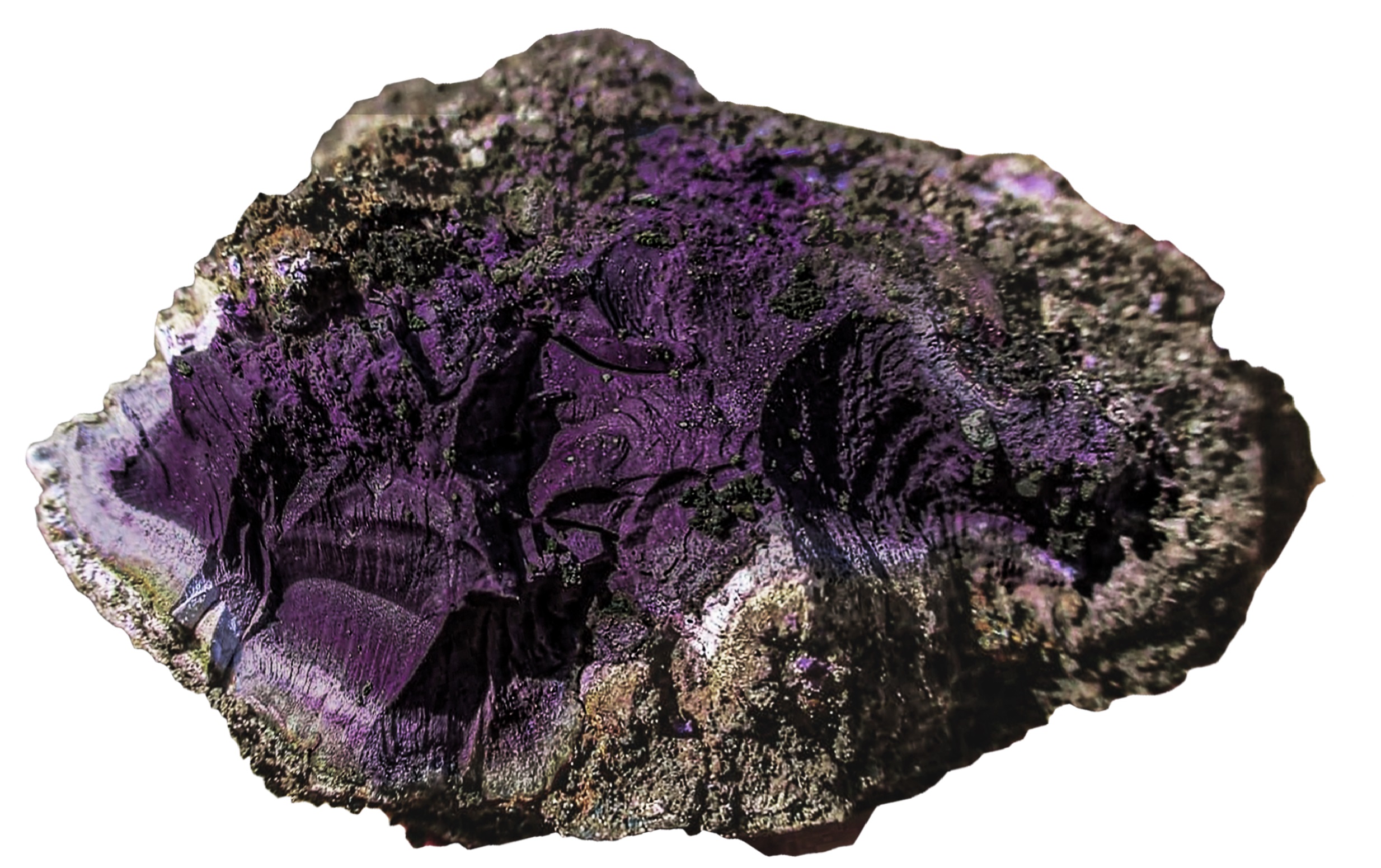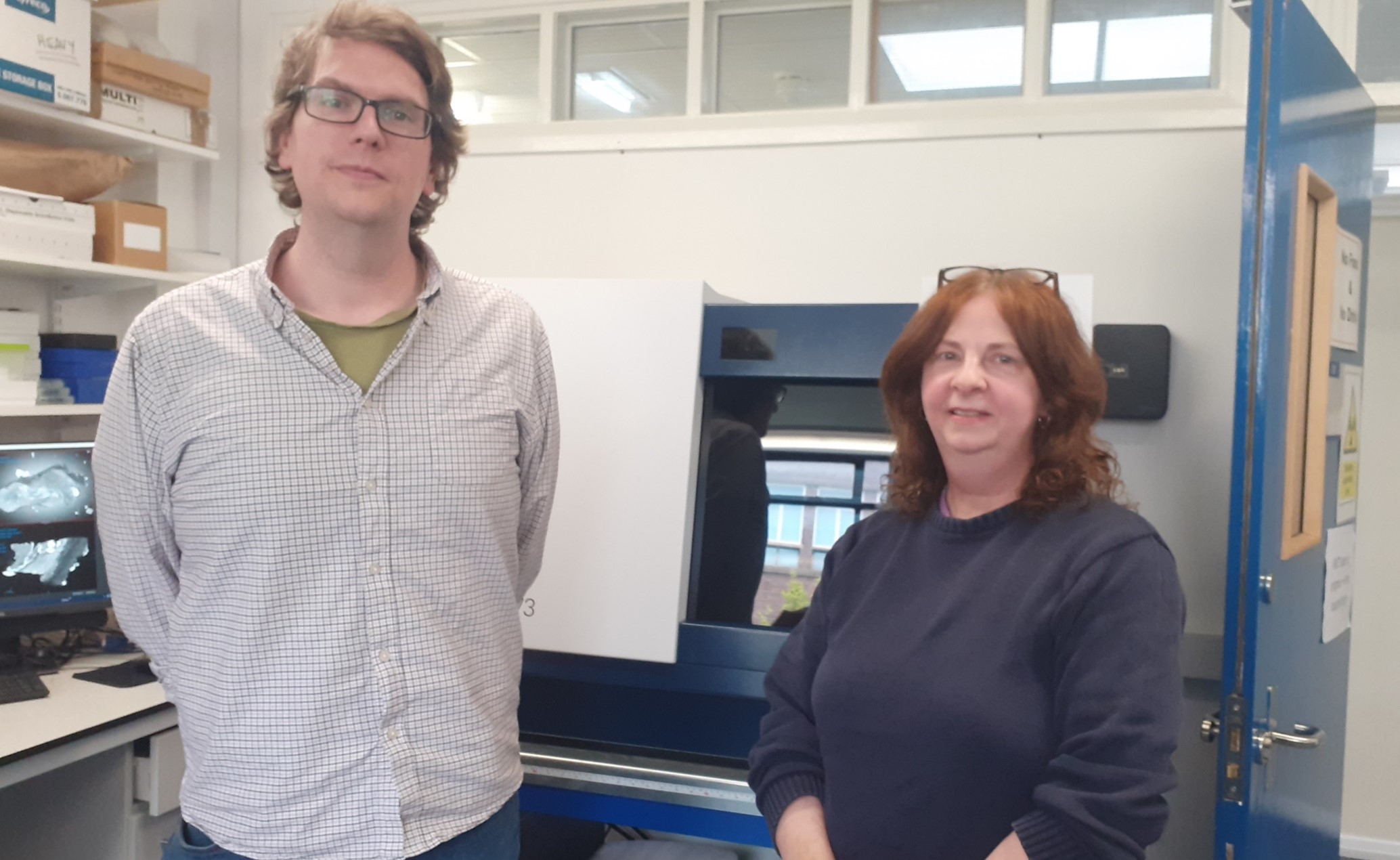Tyrian purple Carlisle
Newcastle expert helps reveal link between ancient Rome and Carlisle
Published on: 7 May 2024
A Newcastle University lab technician has played a pivotal role in establishing the connection between a modern day cricket club in Carlisle and the centre of Roman power in the third century AD.
Diana Blumberg, a lab technician in Newcastle University’s Wolfson Archaeology lab, carried out in-depth analysis of items excavated by a team led by Frank Giecco at Wardell Armstrong Archaeology, in preparation for the construction of a new pavilion at the 200-year-old club.
During the excavation, the archaeologists were amazed to uncover a huge bath house (250 m2) constructed over two storeys - the largest single building ever discovered along Hadrian’s Wall. In addition, they found examples of rare, Roman high-status glass, pottery, and gemstone intaglios – stones for setting into rings - indicating the bath house must have been used by very wealthy Romans.
The team also found unusual terracotta vaulting tubes used in the construction of roofs which were of a design normally only found in North Africa, as well as terracotta tiles imprinted with the Imperial hallmark.

Puzzling purple pigment
A key find from the excavation was a palm-sized piece of a vivid purple pigment. On finding it, the archaeologists were stumped as to what it could be and sent it to Diana to provide her expertise.
The ‘howzat’ moment came when Diana carried out a handheld X-ray fluorescence test on a small sample of the material to identify the specific chemical elements present. The analysis revealed the presence of bromine – indicating a marine origin. Since Tyrian purple is produced from mucous secreted by several species of sea snails, the bromine was a tell-tale sign that the pigment discovered at Carlisle was Tyrian purple.
Tyrian purple was used in ancient Greek and Roman wall paintings and as a dye in textiles. In ancient times, the dye was highly valued since producing it required substantial labour and was very time-consuming. Because of this, items coloured with the pigment became associated with power and wealth, and no-one across the Roman Empire was allowed to wear or use items dyed with the pigment other than the emperor.
Diana, and colleague Riley Snyder, X-ray Microtomography Research Technician, also conducted an infrared spectroscopy (FTIR) and X-ray computed tomography (XRCT) analysis on the sample, allowing compositional analysis in a non-destructive way. This showed that the pigment had been mixed with a beeswax binder.
The results of Diana’s analysis allowed Frank and his team to determine that the bath house may have been built for the Libyan-born emperor Septimius Severus, who came to Britain in 208 AD.
Diana said: “I was bowled over when I realised this was Tyrian purple. This is a significant find, not just because it suggests that this luxurious bath house may have been built for Septimius Severus and his court, but it is also believed to be the first time that Tyrian purple has been found on an excavation in the UK.
“Archaeological excavations often tell us only part of the story - to gain an in depth understanding of what objects are and how they might have been used, we need to carry out this type of detailed analysis, so I’m delighted to have been part of this extraordinary discovery.”

Specialist analysis
The excavation at Carlisle Cricket Club was recently featured in the first episode of the current series of BBC 2’s Digging for Britain.
Frank Giecco, Site Director and Technical Director at Wardell Armstrong LLP, said: “For millennia, Tyrian Purple was the world’s most expensive and sought after colour, so it’s hugely exciting to find a piece as large as this. Its presence in Carlisle combined with other evidence from the excavation all strengthens the hypothesis that the building was in some way associated with the Imperial Court of the Emperor Septimius Severus which was located in York between 208 -211AD and possibly relates to an Imperial visit to Carlisle.”
The Wolfson Archaeology lab is part of the larger Arts and Humanities Research Council-funded North East Material Culture Analytical Suite (NEMCAS). The labs provide researchers, students and partners the latest cutting edge equipment for specialist investigation of archaeological discoveries. For example, it is currently being used to provide a better understanding of items uncovered as part of the excavations taking place at Birdoswald Roman fort.
Diana and Riley are now carrying out further analysis on the piece of Tyrian purple, including what the material encasing it is and whether this provides any clue as to where it was produced.
